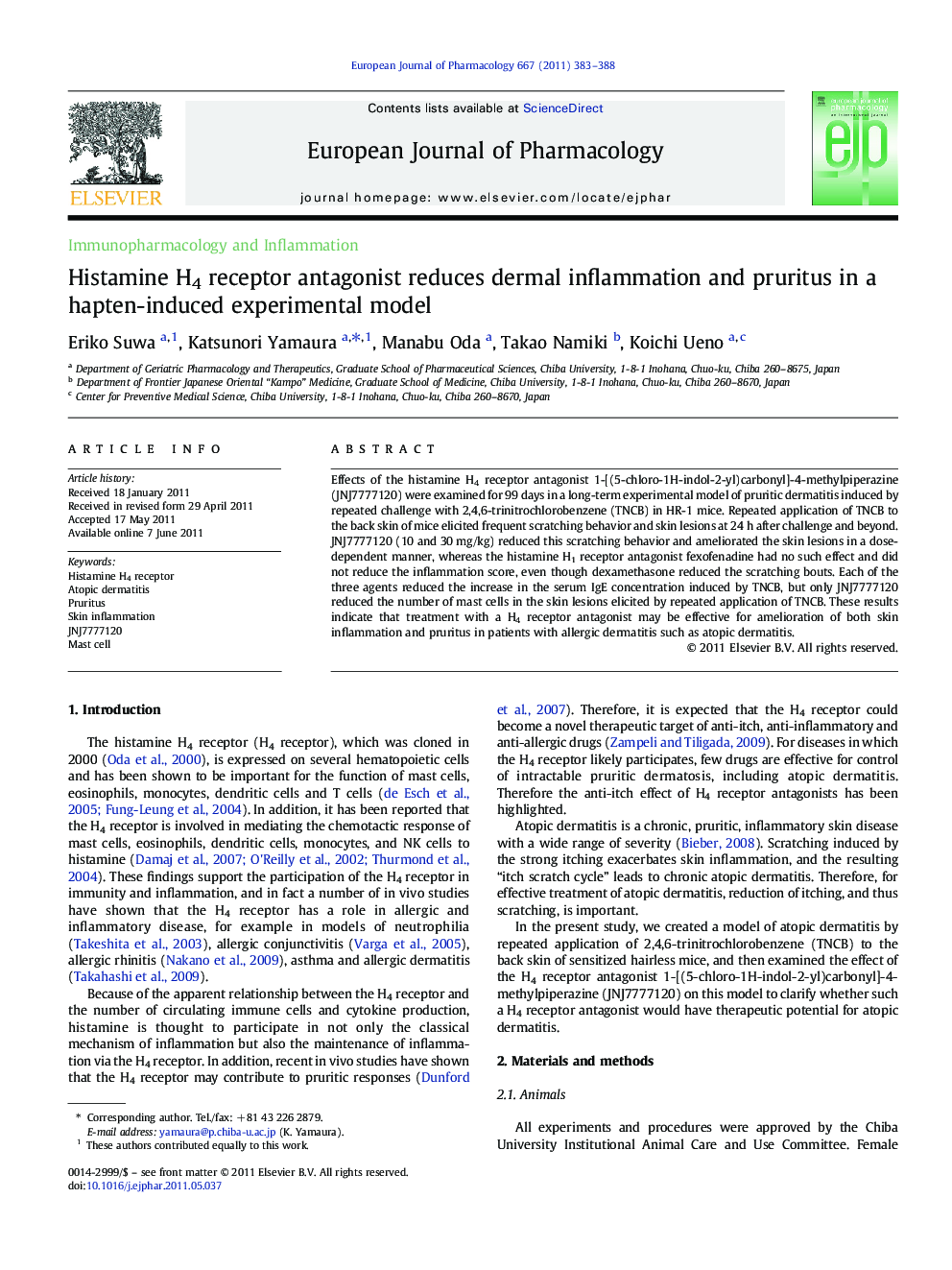| Article ID | Journal | Published Year | Pages | File Type |
|---|---|---|---|---|
| 2532739 | European Journal of Pharmacology | 2011 | 6 Pages |
Effects of the histamine H4 receptor antagonist 1-[(5-chloro-1H-indol-2-yl)carbonyl]-4-methylpiperazine (JNJ7777120) were examined for 99 days in a long-term experimental model of pruritic dermatitis induced by repeated challenge with 2,4,6-trinitrochlorobenzene (TNCB) in HR-1 mice. Repeated application of TNCB to the back skin of mice elicited frequent scratching behavior and skin lesions at 24 h after challenge and beyond. JNJ7777120 (10 and 30 mg/kg) reduced this scratching behavior and ameliorated the skin lesions in a dose-dependent manner, whereas the histamine H1 receptor antagonist fexofenadine had no such effect and did not reduce the inflammation score, even though dexamethasone reduced the scratching bouts. Each of the three agents reduced the increase in the serum IgE concentration induced by TNCB, but only JNJ7777120 reduced the number of mast cells in the skin lesions elicited by repeated application of TNCB. These results indicate that treatment with a H4 receptor antagonist may be effective for amelioration of both skin inflammation and pruritus in patients with allergic dermatitis such as atopic dermatitis.
► H4R antagonist ameliorates both chronic skin inflammation and pruritus. ► H4R antagonist ameliorates hapten induced chronic dermatitis. ► Anti-inflammatory and anti-pruritic effects of H4R antagonist.
